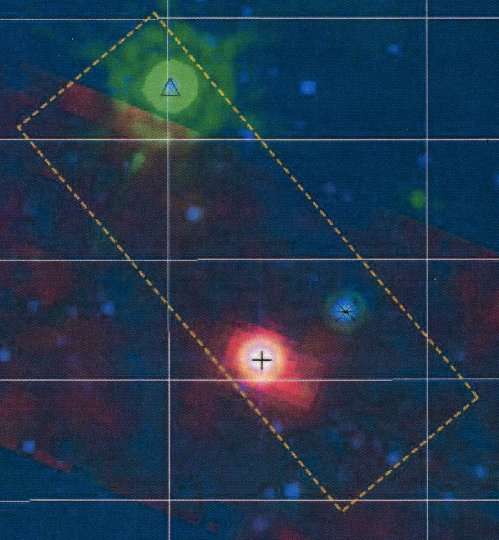
 |
The dusty disk of Eta Crucis (red image denoted by the cross) is seen resolved in this composite infrared image. The rectangle is just four minutes of arc long. The green source marked by the triangle is an advanced giant carbon star called CL Crucis, which is so enmeshed in dust formed in a strong wind (very unlike the dust in the debris disk around Eta Cru, which is presumably caused by collisions among embedded bodies) that it is completely hidden from optical view. (From an article by C. A. Beichman, G. Bryden, K. R. Stapelfeldt, et al. in the Astrophysical Journal, vol. 652, p. 1674, 2006.) |